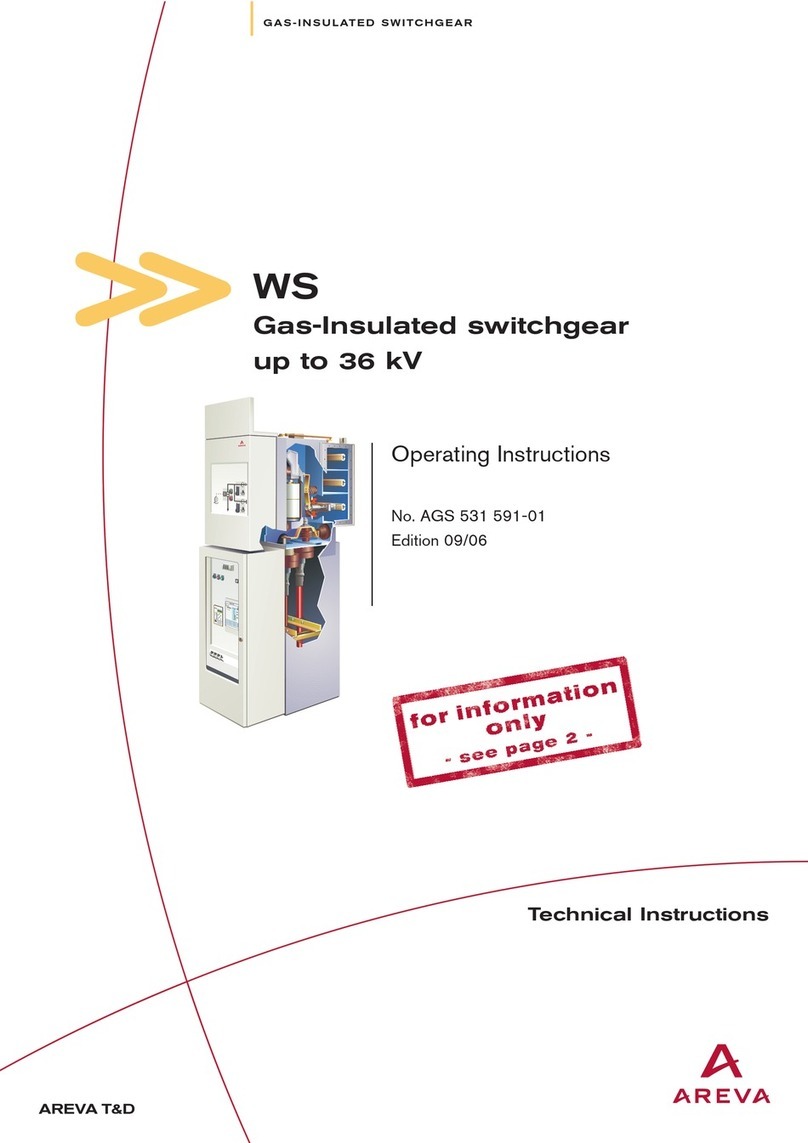
Global Documentation H16x/EN GL/A11
MiCOM H16x
Page 7/26
Expect as specified herein, T&D AUTOMATION makes no guaranties, express or implied
and specifically disclaims and guaranties of merchantability or fitness for a particular
purpose. Customer's rights to recover damages caused by fault or negligence on the part
T&D AUTOMATION shall be limited to the amount therefore paid by the customer. T&D
AUTOMATION will not be liable for damages resulting from loss of data, profits, use of
products or incidental or consequential damages even if advised of the possibility thereof.
This limitation of the liability of T&D AUTOMATION will apply regardless of the form of
action, whether in contract or tort, including negligence. Any action against T&D
AUTOMATION must be brought within one year after the cause of action accrues. T&D
AUTOMATION shall not be liable for any delay in performance due to causes beyond its
reasonable control. The warranty provided herein dues net cover damages, defects,
malfunctions, or service failures caused by owner's failure to follow the T&D AUTOMATION
installation, operation, or maintenance instructions; owner's modification of the product;
owner's abuse, misuse, or negligent acts; and power failure or surges, fire, flood, accident,
actions of third parties, or other events outside reasonable control.
1.7 Copyrights & trademarks
1.7.1 Copyrights
Under the copyright laws, this publication may not be reproduced or transmitted in any form,
electronic or mechanical, including photocopying, recording, storing in an information
retrieval system, or translating, in whole or in part, without the prior written consent of T&D
AUTOMATION.
1.7.2 Trademarks
PACiS, PACiS SCE, PACiS ES, PACiS SMT, PACiS PS, PACiS SCE, pacis.biz and
pacis.com- are trademarks of T&D AUTOMATION. Product and company names mentioned
herein are trademarks or trade names of their respective companies.
1.8 Warnings regarding use of T&D Automation products
T&D AUTOMATION products are not designed with components and testing for a level of
reliability suitable for use in or in connection with surgical implants or as critical components
in any life support systems whose failure to perform can reasonably be expected to cause
significant injuries to a human.
In any application, including the above reliability of operation of the software products can be
impaired by adverse factors, including -but not limited- to fluctuations in electrical power
supply, computer hardware malfunctions, computer operating system, software fitness,
fitness of compilers and development software used to develop an application, installation
errors, software and hardware compatibility problems, malfunctions or failures of electronic
monitoring or control devices, transient failures of electronic systems (hardware and/or
software), unanticipated uses or misuses, or errors from the user or applications designer
(adverse factors such as these are collectively termed "System failures").
Any application where a system failure would create a risk of harm to property or persons
(including the risk of bodily injuries and death) should not be reliant solely upon one form of
electronic system due to the risk of system failure to avoid damage, injury or death, the user
or application designer must take reasonably steps to protect against system failure,
including -but not limited- to back-up or shut-down mechanisms, not because end-user
system is customised and differs from T&D AUTOMATION’ testing platforms but also a user
or application designer may use T&D AUTOMATION products in combination with other
products. These actions cannot be evaluated or contemplated by T&D AUTOMATION,;
Thus, the user or application designer is ultimately responsible for verifying and validating
the suitability of T&D AUTOMATION products whenever they are incorporated in a system or
application, even without limitation of the appropriate design, process and safety levels of
such system or application.




























